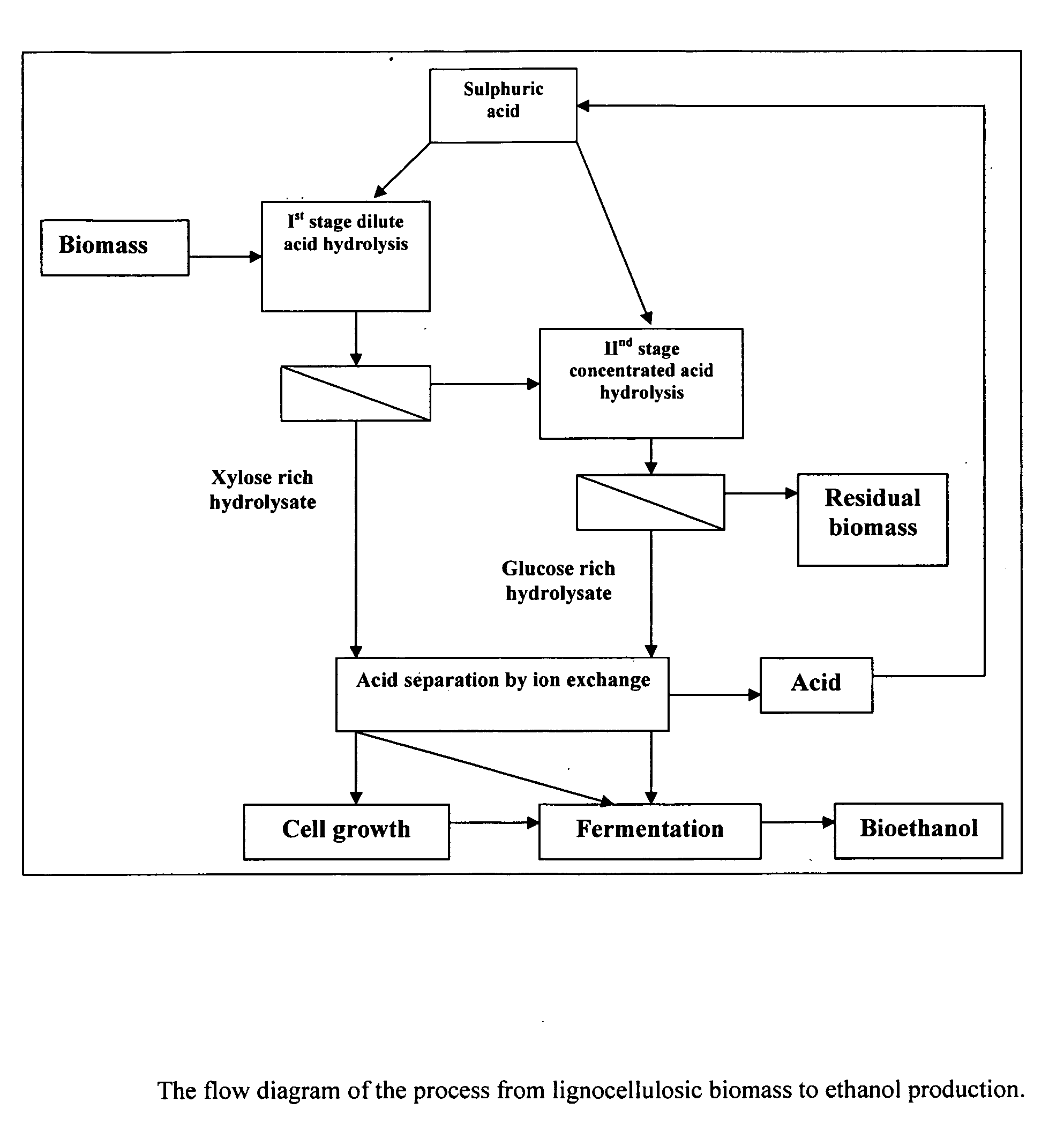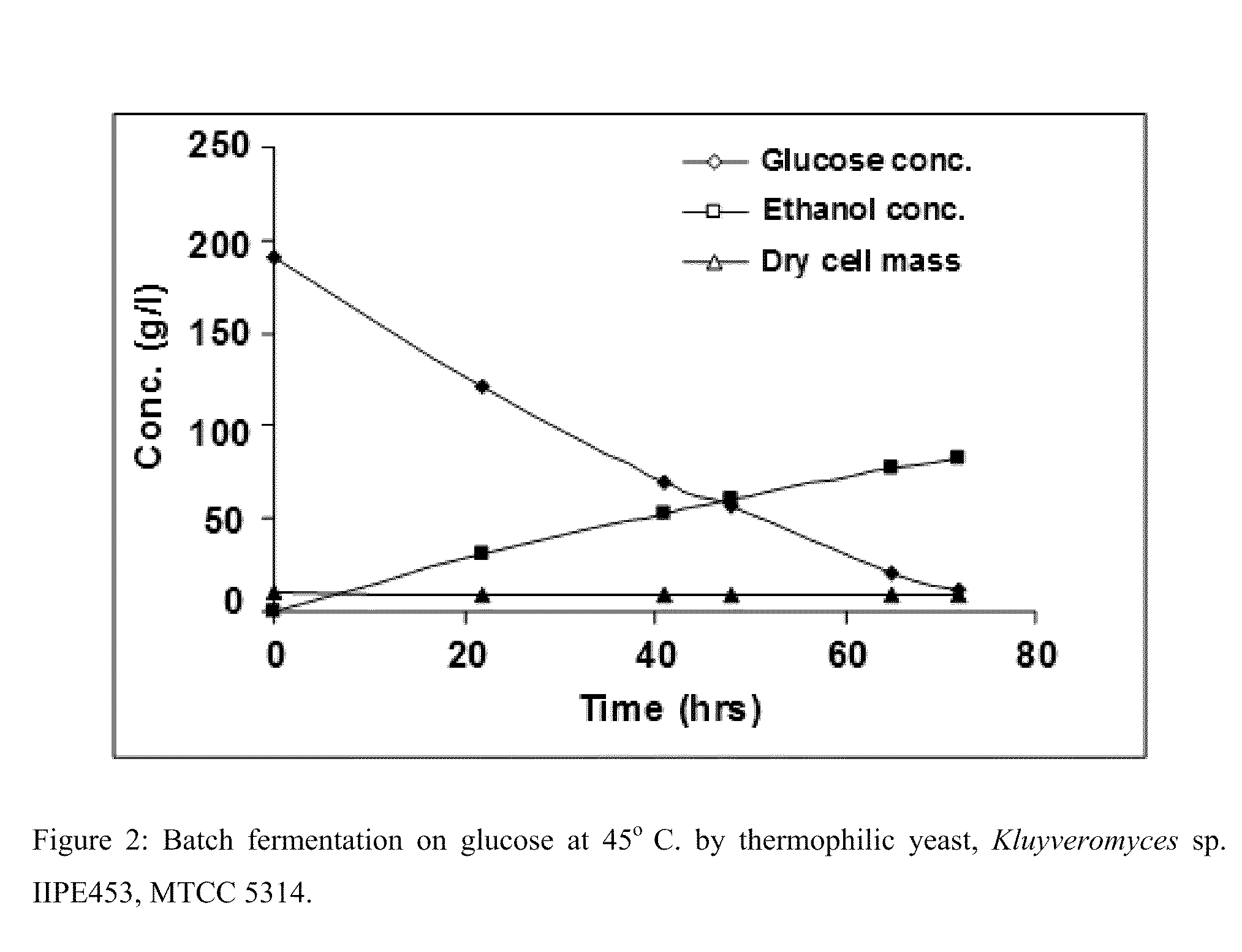Novel strain and a novel process for ethanol production from lignocellulosic biomass at high temperature
- Summary
- Abstract
- Description
- Claims
- Application Information
AI Technical Summary
Benefits of technology
Problems solved by technology
Method used
Image
Examples
examples
[0104]The following examples are given by way of illustration and therefore should not be construed to limit the scope of the present invention in any way.
Growth of the Strain
example-1
[0105]The strain Kluyveromyces IIPE453 MTCC 5314 was grown in salt medium hereinafter referred to as SM 1 medium, containing 0.15 g / l di-sodium hydrogen ortho phosphate, 0.15 g / l potassium di-hydrogen ortho-phosphate, 2.0 g / l ammonium sulphate, 1.0 g / l yeast extract and 10 g / l glucose at pH 5.0. Growth of the yeast strain was carried out in a 250 ml conical flask containing 50 ml of the SM1 medium inoculated with a loop full of preserved frozen yeast culture and incubated in environmental shaker (Infoss, Switzerland) at 45° C. and 180 rpm. 1 ml culture sample was withdrawn at 2 h interval and dry weight of the yeast cells and glucose concentration was determined. The dry cell mass was analyzed by centrifuging in eppendorf tube by using Eppendorf Centrifuge 5415 C at 10,000 rpm for 5 min, washing twice with distilled water and drying in vacuum oven at 70° C. and 50 mm vacuum to a constant weight. The specific growth rate of the yeast Kluyveromyces sp. IIPE453 (MTCC 5314) on glucose w...
example-2
[0106]Growth of the yeast strain was carried out in a 250 ml conical flask containing 50 ml of the SM1 medium inoculated with a loop full of preserved frozen yeast culture and incubated in environmental shaker (Infoss, Switzerland) at 60° C. and 180 rpm. 1 ml culture sample was withdrawn at 2 hr interval and dry weight of the yeast cells and glucose concentration was determined. The dry cell mass was analyzed by centrifuging in eppendorf tube by using Eppendorf Centrifuge 5415 C at 10,000 rpm for 5 min, washing twice with distilled water and drying in vacuum oven at 70° C. and 50 mm vacuum to a constant weight. The specific growth rate of the yeast Kluyveromyces sp. IIPE453 (MTCC 5314) on glucose was determined as 0.02 h−1. The yield coefficient of the strain was 0.01.
PUM
 Login to View More
Login to View More Abstract
Description
Claims
Application Information
 Login to View More
Login to View More - R&D
- Intellectual Property
- Life Sciences
- Materials
- Tech Scout
- Unparalleled Data Quality
- Higher Quality Content
- 60% Fewer Hallucinations
Browse by: Latest US Patents, China's latest patents, Technical Efficacy Thesaurus, Application Domain, Technology Topic, Popular Technical Reports.
© 2025 PatSnap. All rights reserved.Legal|Privacy policy|Modern Slavery Act Transparency Statement|Sitemap|About US| Contact US: help@patsnap.com



